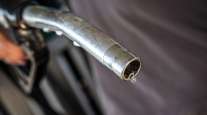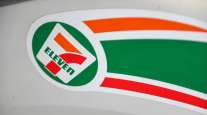E&MU: Next-Gen Diesels Cut DPF Upkeep, Engine Makers Say
By Frederick Kiel, Staff Reporter
This story appears in the November/December 2009 issue of Equipment & Maintenance Update, a supplement to the Nov. 23 print edition of Transport Topics. Click here to subscribe today.
The ire of fleet managers who say diesel particulate filters are clogging with soot too quickly should be eased with the arrival of 2010 engines, according to some engine manufacturers.
In meeting the final reduction of nitrogen oxide emissions, the coming generation of diesel engines will produce less particulate matter, in turn putting re-duced burden on the filters, said David McKenna, director of powertrain marketing for Volvo Trucks North America.
“We’re making simple chemistry work in our favor,” he said, explaining that the chemical reactions taking place in Volvo’s selective catalytic reduction engines will eliminate more soot than current engines, thus sending cleaner exhaust through the DPF.
Volvo is one of several manufacturers using SCR to meet the Environmental Protection Agency’s 2010 NOx limits, and Volvo’s approach to the technology is largely mirrored by the others.
Navistar, by contrast, is sticking with exhaust gas recirculation to hit the new target, and expects its 2010 engines “not [to] have appreciably greater soot” than current units, said Timothy Shick, director of marketing for the company’s engine group.
All diesel manufacturers began equipping commercial trucks with DPFs in 2007 to remove particulate matter from the exhaust stream. These filters trap and break down unburned solid particles. Eventually, the accumulated matter is consumed by the systems’ heat. Regeneration leaves no residue in the filter.
In general, DPF systems function passively. Engines running at highway speeds over extended periods generally produce enough heat, combined with the chemical reaction caused by the filter’s precious metal catalyst, to convert contaminants to carbon dioxide gas. The operator does not have to take any action to prevent soot buildup in the filter’s chambers.
Many fleets say this passive regeneration seems to be working as advertised.
During shorthaul and stop-and-go operations, however, adequate engine temperature may not be sustained long enough to do the purging. These cases call for manual, or “active” regeneration, which requires that the truck stop and idle for 30 minutes or longer.
With active regeneration, the driver switches on an injector that sprays doses of fuel onto the filter’s oxidation catalyst. The temperature flares high enough to incinerate the trapped soot.
This process, which requires driver intervention and vehicle downtime, remains a source of frustration for some truck operators.
“Overall, the issue of regeneration has been terrible,” said Steph Sabo, maintenance manager for Norrenberns Truck Service, Nashville, Ill.
Sabo, the current chairman of American Trucking Associations’ Technology & Maintenance Council, said his fleet’s shorthaul trucks too often must be pulled from service to conduct DPF regeneration. He called manual regeneration “a dead expense — the expense of driver training, the expense of fuel consumption, the expense of learning the maintenance side.”
Sabo added that his on-highway units aren’t exempt, especially in trucks with undiagnosed service issues.
“You may have a mechanical problem that causes excessive regeneration, and you don’t know about it,” he said.
“Another DPF issue is [the filter] being burnt out internally, from what my opinion would be a defective seventh injector possibly over-fueling, causing extreme hot spots in filter.”
The seventh injector squirts fuel into the DPF chamber.
Regeneration is a fundamental DPF maintenance step, but just about any engine problem can affect the filter, said Dan Umphress, managing director of FedEx Freight.
“We did not anticipate that we would always have to check the DPF in routine maintenance,” Umphress said. But “it’s clearly what you have to do, because anything that happens upstream can impact it.”
For example, if a fuel injector fails, maintenance workers have to check the DPF after the injector is replaced to make sure the failed injector did not shoot fuel into the DPF.
For turbo-equipped trucks, fleets must be careful that metal shards don’t slice through the filter’s ceramic core if the turbo fails.
“That [turbo] can throw its guts into the [DPF] cylinder if it goes bad,” Umphress said. “You have to be very careful.”
Filter maintenance can get tricky for fleets like Cowan Systems, Baltimore, which runs both longhaul and shorthaul routes. Cowan Vice President Norman Mitchell said his fleet’s over-the-road units were able to clean their DPFs as they ran, but the same vehicles experienced trouble on shorter routes.
Mitchell said problems arise partly because the trucks work double shifts, often combining one shift of road use and one of local travel. About 40% of the fleet’s operations are shorthaul, he said.
“We’ve had continued problems with our trucks on shorthaul and pickup-and-delivery routes that aren’t able to maintain sufficient temperatures for the ‘regen’ process to complete itself,” Mitchell said. “That means parked regeneration has become a major part of the process.”
If downtime nettles a manager, there’s also a price to be paid if the warning light is ignored.
“We have drivers taking out different trucks each day, and if the truck’s computer tells a driver to perform a regen and he doesn’t comply, it can plug up the seventh injector,” Mitchell said. “The truck can stop running and sometimes it has to go to a dealer to be reprogrammed.”
Other fleets have found that careful routing can reduce manual regen cycles.
“We knew it was critical how we dispatched them — to put them on the longer routes — and it was important to train the drivers,” said Dan Suza, vice president of maintenance and environmental affairs for less-than-truckload regional carrier Mountain Valley Express, Manteca, Calif. The company owns 13 DPF-equipped trucks.
Factoring in the time it takes for active regeneration has also worked for Ozark Trucking. The Sacramento, Calif., fleet’s routes range from 500 miles to very local.
“For the most part, the regeneration takes place during the driving cycle,” said Senior Manager Ed Gamache. “As much as possible, we integrate these trucks with our duty cycle so that they are set to generate on their own.” There are 25 DPF-equipped units in Ozark’s fleet.
Gamache said there have been “a few instances” when the trucks had to undergo parked regeneration. Contrary to manufacturer guidelines, however, Ozark asks its drivers to avoid initiating the process unless they get a signal of a pending shutdown if regeneration is not completed.
“Normally, at end of the day, the driver will notify us that the regen light came on, and we will go ahead and regenerate it in the maintenance shop, which normally takes 45 minutes to an hour,” Gamache said. “Generally, the driver doesn’t do it, but they do know how to do it.”
Mitchell added that Cowan educates new drivers about the process in orientation sessions, and gives current drivers training DVDs.
Drivers at Roadstar Trucking, Hayward, Calif., haven’t given a second thought to regeneration on the fleet’s single DPF-equipped unit, company President Bob Ramorino said.
“Our drivers have never even seen a single warning light about it,” said Ramorino, adding that the truck has covered 50,000 miles on mostly local routes since entering the fleet in December 2008. “We’ve never had one incident of active regeneration when running down the road, much less an example of parked regen.”
Instances of active regeneration should decline — and possibly disappear — with the arrival of 2010-compliant SCR engines, manufacturers claim.
Cummins Inc. spokeswoman Christy Nycz said the company’s ISX15 heavy-duty engines, equipped with SCR, will be more efficient in eliminating NOx, because combustion temperatures will be higher than in current models. And the hotter the combustion, the fewer unburned particles enter the exhaust stream.
Both Volvo and Mack Trucks — a part of Volvo Group — say that regeneration won’t be an issue for SCR-equipped highway engines. Mack is promising “near zero” active regeneration.
Mack spokesman John Walsh said different truck applications means there may be “rare circumstances” of active regeneration, which is why the company stopped short of saying they’d be completely eliminated.
“We use the term ‘near zero’ not only to describe the amount of regulated gases emitted by these trucks, but also the number of active regens our customers will experience,” he said.
Scott Kress, Volvo Trucks North America’s senior vice president of marketing, said in a statement that Volvo has achieved near-zero active regeneration in vocational applications.
Navistar said the exhaust gas recirculation setup on its 2010 MaxxForce engines will treat NOx within the engine, will not produce appreciably greater soot than 2007 models, and will not cause a noticeable difference in cleaning cycles.
“We do not expect any significant difference between our current engines and 2010 engines regarding DPF regeneration,” Navistar’s Shick said, noting that the company has increased fuel injection pressure to cut down on soot production and recalibrated its combustion characteristics.
“It’s not an issue for us,” Shick said.




